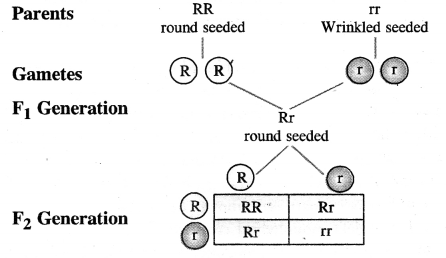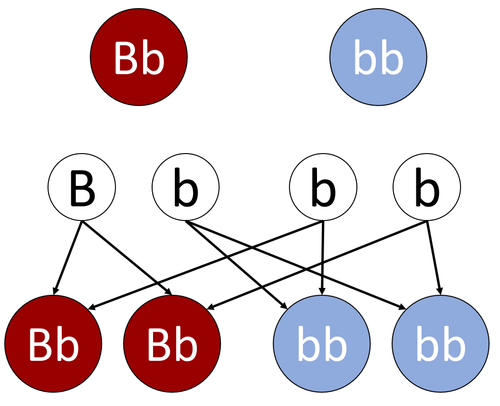a. Genotype and Phenotype.
Genotype
| Phenotype
|
The internal genetic makeup or appearance of an organism is called genotype.
| The external appearance of an organism for a contrasting characteristic is called phenotype.
|
| Parental characteristics can be found in genotype. | Parental characteristics cannot be found 100% in phenotype. |
| It is expressed in letters. | It is expressed in words. |
b. Dominant characteristics and Recessive characteristics.
Dominant characteristics
| Recessive characteristics
|
| The characteristics which are prominent and appear in successive generations are called dominant characteristics. | The suppressed characteristics which cannot be expressed in successive generations are called recessive characteristics. |
| Dominant characteristics are seen over recessive. | Recessive characteristics remains hidden. |
c. F1 generations and F2 generations.
F1 generations
| F2 generations
|
| The generation obtained by crossing two parental stocks is called F1 generations. | The generation obtained by crossing two parental stocks of F1 generations is F2 generations.
|
| The parents of F1 generation have pure genotype. | The parents of F2 generation does not have pure genotype.
|
| It is also first filial generation. | It is also second filial generation.
|
d. Monohybrid cross and Dihybrid cross.
Monohybrid cross
| Dihybrid cross
|
| The cross involving only one pair of constracting characteristics is called monohybrid cross. | The cross involving two pair of constracting characteristics is called Dihybrid cross.
|
| Here, off springs having phenotypic ratio of 3:1 are produced in F2 generation. | Here, off springs having phenotypic ratio of 9:3:3:1 are produced in F2 generation.
|

